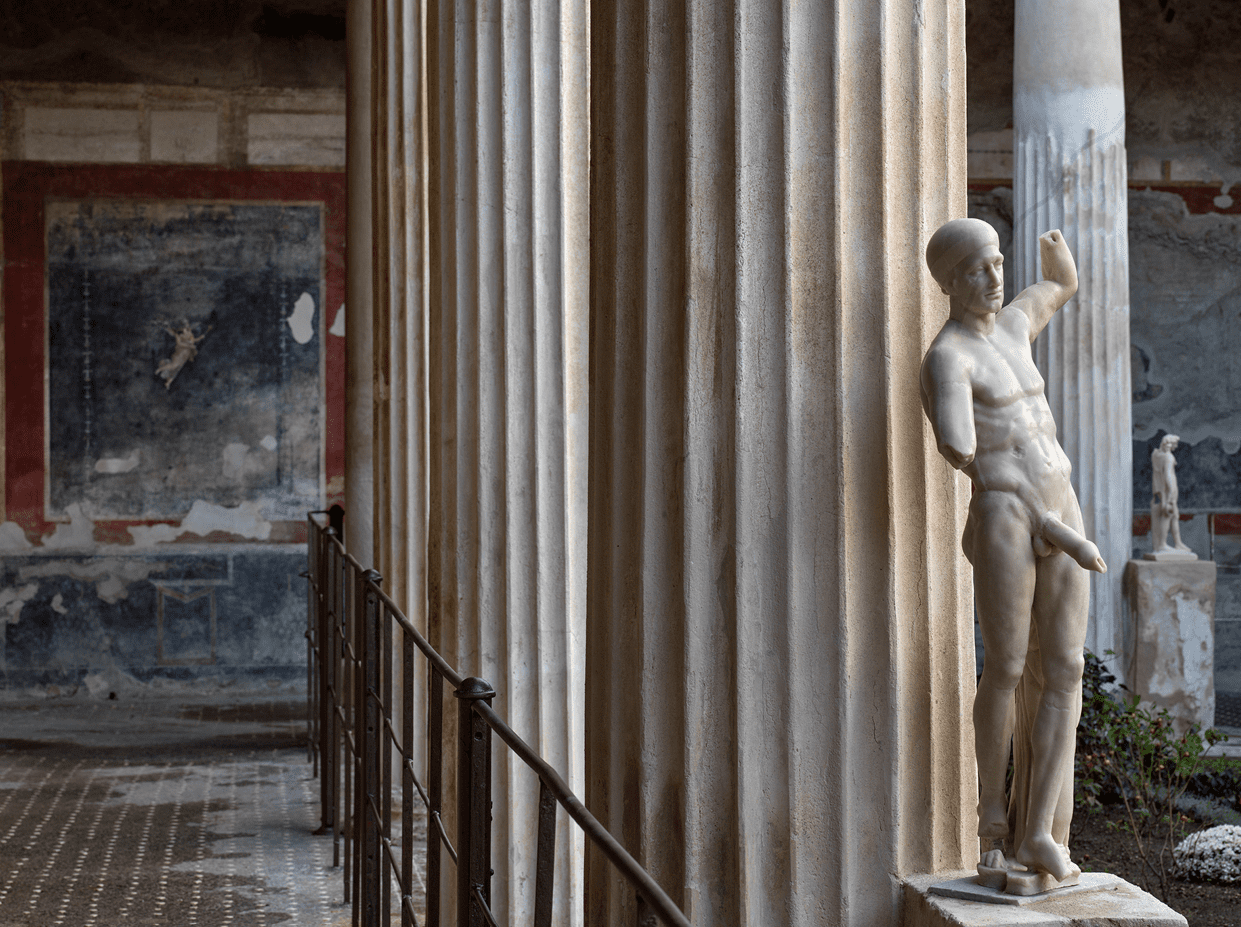The remains of a luxurious home in the ancient Roman town of Pompeii have been opened up to the public after years of refurbishment. The Archaeological Park of Pompeii officially unveiled the refurbed property on Tuesday – and what a beautiful sight it is.
Known as La Casa Dei Vettii, the house was originally excavated between 1894 and 1896, but was subjected to an extensive restoration project in 2016.
The opulent property, dotted with raunchy statues and erotic art, likely belonged to two men who were freed as slaves and made a fortune through the wine trade. It also appears that a Greek sex worker operated in the house alongside the two freedmen.
The god Priapus in all his glory. Image credit: © Luigi Spina
The house has been described as a living museum that encapsulates the luxurious life of Roman elites in Pompeii, before volcanic ash from Mount Vesuvius furiously rained hell on the town in 79 CE.
“The House of the Vettii represents the story of the Roman world encapsulated in a single house, the ‘house/ museum’ of the ‘Roman spirit’: it contains mythological frescoes and sculptures made of bronze and marble of exceptional artistic quality which reflect the complex relationship between Greek models and Roman copies, as well as the economic and social life of the city,” Gabriel Zuchtriegel, Director of the Archaeological Park of Pompeii, said in a statement.
“The owners, who were freedmen and thus former slaves, testify to a level of social mobility which would have been unthinkable two centuries previously. Their wealth stemmed from commerce in agricultural produce from the territory around Pompeii, but it would appear that prostitution was also practised in their house by a Greek slave woman who belonged to the most deprived groups of society,” Zuchtriegel added.
Another shot of the beautiful garden. Image credit: © Luigi Spina
Look away, kids. Image credit: ©Silvia Vacca
The home features a beautiful enclosed garden that’s fitted with a complex system of water pipes and small fountains. Along with classical Roman pillars, the garden is decorated with many sculptures. The researchers say the most unique is a sculpture of Priapus, a god of fertility and the male genitalia. Unsurprisingly, the god is depicted with a startlingly large erect penis.
As impressive as he may be, the structure is also adorned with an array of vibrantly colored frescoes. To restore the paintings to their former glory, archeologists had to remove of layers of wax that had naively been applied in the past with the intention of protecting them.
Some of the frescoes were not naughty. Image credit: © Luigi Spina
Historians worked out that La Casa Dei Vettii was most likely owned by two freedmen who had been released from slavery and later acquired wealth through the wine trade. As for the relationship between the two men, that’s up for speculation.
Zuchtriegel told The Guardian: “It was uncommon to have biological siblings who were slaves and then set free, because family ties were cut with slavery so it’s very unlikely they were brothers. It’s more likely that they were buddies during their time as slaves and then set free.”
“Buddies” would be one way to put it. However, it’s important to consider that ancient Romans certainly weren’t prudish about sexuality and same-sex relations.
Source Link: Ancient Pompeii Villa Filled With Beautifully Raunchy Art Goes On Show
